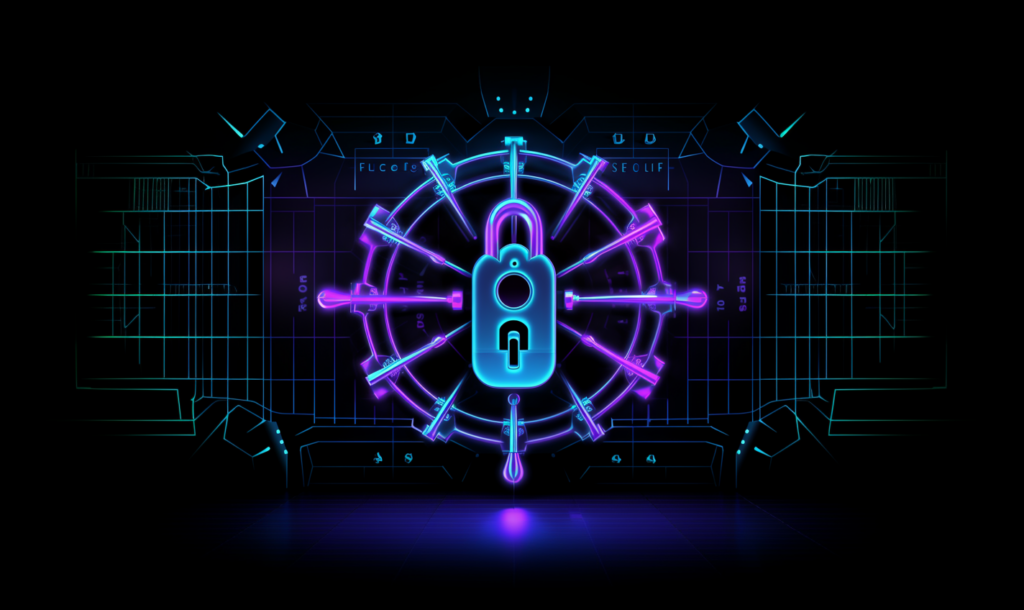1. Introduction
The digital world is evolving, and so are the cybersecurity threats that loom over our connected ecosystems. The traditional moats and castles approach, where you built defenses around your resources, no longer suffices. Modern threats, intricate and covert, call for a paradigm shift in how we secure our digital resources. Enter Zero Trust—a strategic cybersecurity model that operates on a simple yet profound principle: “Never trust, always verify.”

2. Foundations of Zero Trust
Historically, cybersecurity was largely about building tall and impenetrable walls around our data and applications. This perimeter-based approach, however, is proving increasingly inadequate. Why? Because the perimeter is dissolving. We have cloud environments, mobile devices, IoT, and more. Zero Trust architecture, on the other hand, works under the assumption that threats can be both outside and inside the organization. Thus, regardless of where a request originates, it needs to be verified and authenticated.
In real-world terms, imagine entering a high-security building. Previously, once you passed the entrance security, you’d have access to various rooms. With Zero Trust, every room you attempt to enter would require verification—akin to having a unique keycard for each space.
3. Kubernetes and the Zero Trust Model

Kubernetes, a powerful orchestrator for containerized applications, has become an integral part of modern infrastructure. Its dynamic and distributed nature makes it a powerful tool but also introduces complexities in maintaining security. Each pod, service, or node in a Kubernetes cluster can be seen as a potential entry point for malicious actors.
Incorporating Zero Trust in Kubernetes means that every single request, whether it’s a user accessing a service or a microservice communicating with another, needs authentication and authorization.
4. Secure Communication with Service Mesh

In a microservices architecture, different services often need to communicate with each other. A Service Mesh controls this communication, ensuring it’s both efficient and secure.
By using mTLS (mutual Transport Layer Security), Service Meshes like Istio or HashiCorp Consul can encrypt the traffic between services, ensuring that the communication is both confidential and authenticated.
Example: Consider a financial institution that employs a microservices-based application to handle user transactions. When a user requests a funds transfer, multiple microservices might get involved: one to verify the user’s identity, another to check account balances, and yet another to process the transaction. With mTLS in a Service Mesh, the institution ensures that these communications are secure and authenticated, safeguarding user data and funds.
5. Network Security in Kubernetes: Spotlight on NeuVector

Network security in a Kubernetes environment is crucial. NeuVector specializes in this arena, offering a layered security approach that includes visibility, protection, and compliance. With its deep packet inspection, NeuVector can monitor all inter-container communications in real-time.
Example: Imagine an e-commerce platform where millions of transactions occur daily. NeuVector can detect and block any unauthorized or suspicious activities in real-time, like if a service suddenly starts requesting sensitive user data without proper authorization.
6. Identity and Access Management in a Zero Trust World

IAM is the pillar upon which Zero Trust stands. The concept revolves around ensuring only the right entities (users, services, nodes) have access to your resources and only to the extent they require.
MFA (Multi-Factor Authentication) and SSO (Single Sign-On) are instrumental in this space. While MFA ensures that users provide multiple pieces of evidence to authenticate, SSO ensures a seamless experience by requiring users to log in just once to access multiple applications.
Example in Kubernetes: RBAC (Role-Based Access Control) can be employed to fine-tune permissions. For instance, developers can be given access only to deploy in the development namespace, while operations teams might have broader access to handle deployments across various namespaces.
7. Managing Secrets in Kubernetes

Handling secrets, like API keys or database credentials, is one of the challenges in Kubernetes. Using tools such as the External-Secrets service, Kubernetes can integrate with external secret management solutions like Azure KeyVault and AWS Secrets Manager.
These solutions centralize and encrypt secrets, ensuring they’re not directly embedded in code or configurations. By doing so, secrets remain protected even if one part of the system is compromised.
Benefits: With Azure KeyVault or AWS Secrets Manager integration, if a company has multiple Kubernetes clusters or other services, they can manage secrets centrally. For instance, if a database password needs to be rotated, it can be updated in the secret manager, and all services can fetch the updated secret without manual intervention.
8. Policy Enforcement with Open Policy Agent (OPA)

Policies define the rules that applications, users, and services should adhere to. OPA is a versatile tool that can enforce these policies across the stack.
Example: A healthcare application in Kubernetes might have a policy stating that patient data can only be accessed by certain services and not stored in non-compliant geographical locations. With OPA, such policies are enforced, ensuring compliance and security.
9. Encryption at Rest: Ensuring Data Privacy and Security

Encryption doesn’t just pertain to data in transit (like communication between services), but also data at rest (like databases or storage). Kubernetes supports various encryption mechanisms, ensuring that even if data is accessed, it remains unintelligible without the proper decryption keys. Trusted registries can also ensure that container images are verified and free from vulnerabilities.
Example: A retail company might store customer purchase histories in a Kubernetes-managed database. Encryption at rest ensures that even if there’s a breach, this sensitive data remains protected.
10. Vulnerability Management: Fortifying Containers in Zero Trust Environments

The principles of Zero Trust demand rigorous vulnerability management, especially in dynamic containerized environments. NeuVector’s specialized container security approach ensures that the Kubernetes-deployed images remain free from vulnerabilities and misconfigurations throughout their lifecycle.
Example: Consider a financial institution rolling out microservices frequently. With each deployment, there’s a risk of introducing vulnerabilities. NeuVector continuously scans these services, both during CI/CD and runtime. Should a vulnerability arise, the service can be isolated to prevent potential exploits. This proactive approach aligns perfectly with Zero Trust’s ‘never trust, always verify’ ethos, ensuring ongoing container security.
11. Image Signature Verification: Trust in Your Containers

In the realm of container orchestration, ensuring the authenticity and integrity of container images is paramount. Introducing Connaisseur – a vital tool for Kubernetes environments that solidifies trust in the deployment process by focusing on image signature verification.
The essence of Connaisseur lies in its commitment to verifying each container image’s cryptographic signature before it ever hits your Kubernetes cluster. This approach not only assures you that the image hasn’t been tampered with but also confirms that it originates from a known, trusted source.
Example: Imagine a global e-commerce platform deploying hundreds of updates daily. Now, picture an attacker subtly injecting a backdoor into one of the container images. With Connaisseur in action, as soon as this tampered image tries to make its way into deployment, it would be flagged and stopped, all thanks to the failed signature verification. It’s an invaluable layer of defense against potential supply chain attacks, ensuring that the platform’s millions of users continue to have a safe and trusted shopping experience.
Conclusion
Transitioning to a Zero Trust architecture in Kubernetes isn’t just about employing tools or setting up policies. It’s about cultivating a mindset where security is a constant and integrated aspect of every decision. As threats evolve, so must our strategies. Embracing Zero Trust is a step forward in this endless, ever-evolving journey of cybersecurity.
